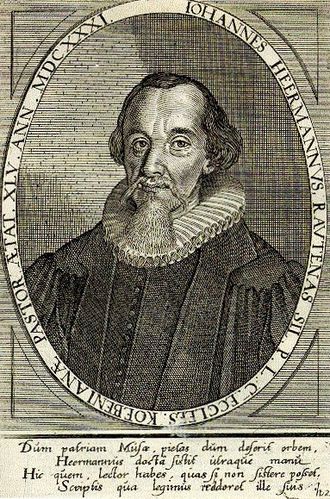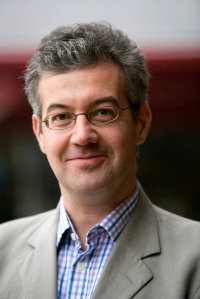Scripture References; st. 2 = 1 Cor. 15:51-52 ref. = 1 Cor. 15:14, 20 George R. Woodward (b. Birkenhead, Cheshire, England, 1848; d. Highgate, London, England, 1934) wrote the text of this Easter carol to fit the VRUCHTEN tune. The text expresses the joy Christ's resurrection brings to believers (st. 1); that joy provides a sense of security throughout our lives (st. 2) and gives confidence even in the face of death (st. 3). The hymn was first published in Woodward's Carols for Easter and Ascension (1894), which later became a part of the 1902 edition of his famous Cowley Carol Book. Educated at Caius College in Cambridge, England, Woodward was ordained in the Church of England in 1874. He served in six parishes in London, Norfolk, and Suffolk. He was a gifted linguist and translator of a large number of hymns from Greek, Latin, and German. But Woodward's theory of translation was a rigid one–he held that the translation ought to reproduce the meter and rhyme scheme of the original as well as its contents. This practice did not always produce singable hymns; his translations are therefore used more often today as valuable resources than as congregational hymns. With Charles Wood he published three series of The Cowley Carol Book (1901, 1902, 1919), two editions of Songs of Syon (1904, 1910), An Italian Carol Book (1920), and the Cambridge Carol Book (1924). Much of the unfamiliar music introduced in The English Hymnal (1906) resulted from Woodward's research. He also produced an edition of the Piae Cantiones of 1582 (1910) and published a number of his translations in Hymns of the Greek Church (1922). Liturgical Use: Easter season; funerals. --Psalter Hymnal Handbook, 1988
VRUCHTEN is originally a seventeenth-century Dutch folk tune for the love song "De liefde Voortgebracht." It became a hymn tune in Joachim Oudaen's David' s Psalmen (1685) as a setting for "Hoe groot de vruchten zijn." The tune is distinguished by the melismas that mark the end of stanza lines and by the rising sequences in the refrain, which provide a fitting word painting for "arisen." Although the melody has a wide range, it has become a popular Easter carol in modern hymnals. The harmonization by Dale Grotenhuis (PHH 4) makes for glorious part singing (many hymnals use a harmonization by Charles Wood). Use medium organ accompaniment, possibly with a trumpet stop or real trumpets. --Psalter Hymnal Handbook
Charles Wood (1866-1926) was born in Ireland. He was a treble chorister in the nearby St Patrick’s Cathedral, Armagh. He received his early education in the cathedral choir school and also studied the organ under Robert Turle and Dr Thomas Marks. In 1883, he was one of the inaugural students of the Royal College of Music, studying composition under Charles Villiers Stanford and CHH Parry. After four years he continued his studies at Selwyn College, Cambridge. In 1889 he was appointed as organ scholar in Gonville and Caius college, Cambridge, becoming a fellow in 1994 and Director of Music and organist. Following the death of Stanford in 1924 Wood took over the role of Professor of Music in Cambridge.
He is remembered for his Anglican Church music.
| Charles Wood from Wikipedia |
George Radcliffe Woodward was an English Anglican priest who wrote mostly religious verse. He fitted most to well known melodies usually from the Renaissance, and occasionally harmonised himself , but usually left this to his collaborator Charles Wood. He was born n Birkenhead and educated in Elstree, then Harrow and Gonville and Caius College, Cambridge. This Joyful Eastertide was published in "Carols for Easter and Ascension tide" in 1894.






